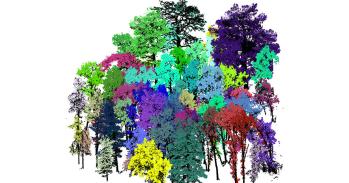Two specimens of one of the world’s oldest and rarest plants, dating back to the time of the dinosaurs, are now on view at the Botanic Garden in Cambridge.
Two specimens of one of the world’s oldest and rarest plants, dating back to the time of the dinosaurs, are now on view at the Botanic Garden in Cambridge.
Two specimens of one of the world’s oldest and rarest plants, dating back to the time of the dinosaurs, are now on view at the Botanic Garden in Cambridge.
Presumed extinct for over 2 million years, the Wollemi pine was re-discovered in Australia in 1994.
The Cambridge Botanic Garden is the only place in East Anglia to display specimens.
Deep in an impenetrable gorge in the Blue Mountains near Sydney, around 100 pines were discovered by an officer in the Wollemi National Park.
Wollemi is an Aboriginal word meaning 'look around you, keep your eyes open and watch out'.
Due to the steep, inaccessible nature of their secret location, some of the earliest seeds and cuttings were collected by a botanist dangling precariously from a helicopter. The find is now the focus of extensive research to aid its conservation.
Dr Tim Upson, Superintendent of the Cambridge University Botanic Garden said "The Wollemi is a rare and unusual addition to our collection. There's a good chance it will survive outdoors in Cambridge and we hope to plant an additional Wollemi this autumn, close to our other 'living fossil', the Dawn Redwood.
We are proud to be helping conserve these living fossils as cultivating the Wollemi pine here, and in gardens and parks everywhere, is the best form of insurance against irrevocable loss in the wild".
The trees have outlived ice ages and bush fires in the isolated rainforest gorge where conditions were suitably humid to buffer them from climate change.
Fossils of the pine have been found from New Zealand and Australia to Antarctica, with the oldest fossil estimated at 90 million years old. The oldest living Wollemi pine is known as 'King Billy' who may be over 1000 years old.
This work is licensed under a Creative Commons Licence. If you use this content on your site please link back to this page.





